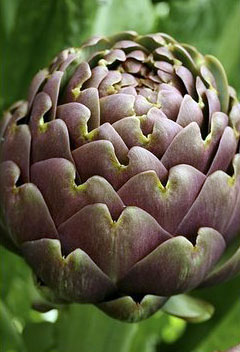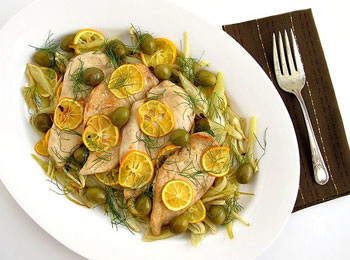 I love this time of year. So many good things are available at the market and in such abundance. I often become distracted with all the choices, making it difficult not to come home with more groceries than I need. I then proceed to have a freak out while trying to use it all up.
I love this time of year. So many good things are available at the market and in such abundance. I often become distracted with all the choices, making it difficult not to come home with more groceries than I need. I then proceed to have a freak out while trying to use it all up.
I definitely overbought on strawberries last week and needed a plan. Luckily I came across these Strawberry Yogurt Muffins over at Culinary Wannabe. They are the perfect breakfast muffin; healthy, low-cal, filling and very yummy. I individually wrapped each one and froze them together in a Ziploc bag for a quick breakfast.
This muffin uses part whole wheat flour which I prefer when it comes to breakfast noshing. However, these do not taste healthy at all. In fact, they taste a bit sinful. They are awesome.
If you have some strawberries to use up, I would consider making these, you'll love them.

 I love salmon. I probably eat entirely too much of it.
I love salmon. I probably eat entirely too much of it. My first foray into a closer relationship with artichokes began as a work assignment. Drive to Lompoc, California, chat with a farmer, get some pictures and get back to Los Angeles without becoming a part of the daily human-and-metal gridlock. Coffee in hand, I raced up the 5, beating traffic and made it with a few minutes to spare.
My first foray into a closer relationship with artichokes began as a work assignment. Drive to Lompoc, California, chat with a farmer, get some pictures and get back to Los Angeles without becoming a part of the daily human-and-metal gridlock. Coffee in hand, I raced up the 5, beating traffic and made it with a few minutes to spare. It was one of those days. I had run all over town doing errands when suddenly it was 5 o’clock and I remembered that the fridge was uncharacteristically empty. I got home, ran up the stairs, ran into the kitchen slightly panicked (the Mom must be fed) and saw that the
It was one of those days. I had run all over town doing errands when suddenly it was 5 o’clock and I remembered that the fridge was uncharacteristically empty. I got home, ran up the stairs, ran into the kitchen slightly panicked (the Mom must be fed) and saw that the  Mediterranean flavors are the ones I turn to when I'm in a cooking rut and can't figure out what to make. That's when I cook with ingredients like lemons, olives, capers, canned tomatoes, fennel, garlic, herbs and olive oil. I always have them on hand in my pantry and refrigerator for back up. It's easy to apply these flavors to give any recipe for chicken, fish and even meat a Mediterranean feel.
Mediterranean flavors are the ones I turn to when I'm in a cooking rut and can't figure out what to make. That's when I cook with ingredients like lemons, olives, capers, canned tomatoes, fennel, garlic, herbs and olive oil. I always have them on hand in my pantry and refrigerator for back up. It's easy to apply these flavors to give any recipe for chicken, fish and even meat a Mediterranean feel.
